We may not have the course you’re looking for. If you enquire or give us a call on + 1-866 272 8822 and speak to our training experts, we may still be able to help with your training requirements.
Training Outcomes Within Your Budget!
We ensure quality, budget-alignment, and timely delivery by our expert instructors.
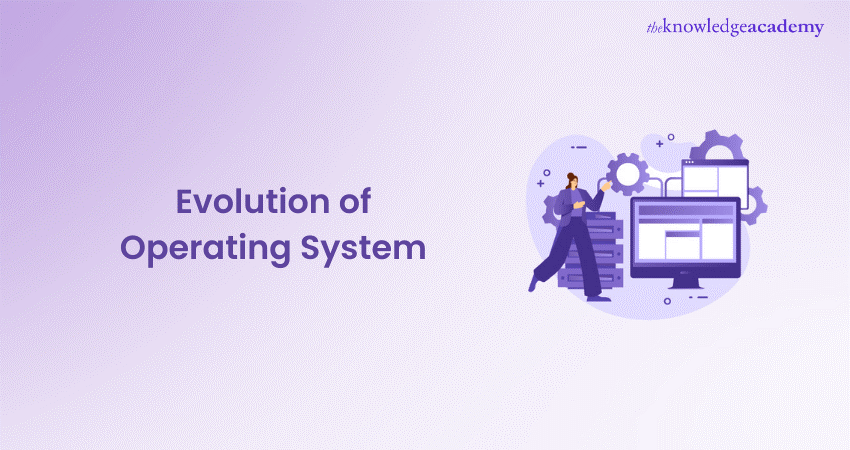
Operating Systems have evolved remarkably from their humble origins as basic task managers. Back then, computers were colossal machines, and their Operating Systems were rudimentary and constrained. Fast forward to today, and Operating Systems power sleek, intuitive devices, enabling seamless multi-tasking. The Evolution of Operating Systems is truly a triumphant story in the world of computing.
This blog explores the fascinating journey of Operating Systems, from simple code-driven systems to the sophisticated platforms that drive our digital lives. Dive in and discover how the Evolution of Operating Systems has revolutionised our tech experience.
Table of Contents
1) Evolution of Operating System
a) First Generation (1945-1955)
b) Second Generation (1955-1965)
c) Third Generation (1965-1980)
d) Fourth Generation (1980-Present)
2) Benefits of Operating Systems
3) Drawbacks of Operating Systems
4) Conclusion
Evolution of Operating System
Operating Systems have progressed from slow and expensive to today's technology, exponentially increasing computing power at comparatively modest costs. Their journey started in 1940 with the beginning of the digital age and went through four generations of transformation. Let's look at the remarkable Evolution of Operating Systems.
First Generation (1945-1955)
Serial Processing began the Evolution of Operating Systems. It marked the start of the development of electronic computing systems as alternatives to mechanical computers. Because of the flaws in mechanical computing devices, humans' calculation speed is limited, and they are prone to making mistakes.
Because there is no Operating System in this generation, the computer system is given instructions that must be carried out immediately.
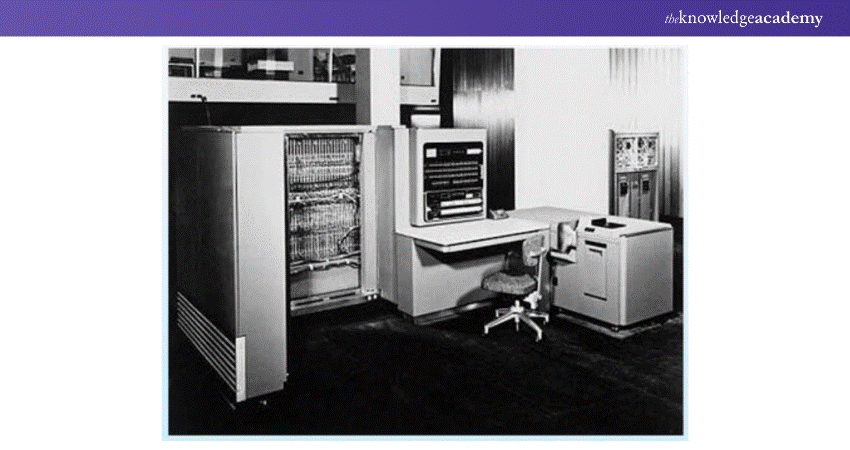
By the 1940s and 1950s, programs were incorporated into hardware components without using an Operating System. The challenges here are scheduling and setup time. The user logs in for machine time by wasting computational time.
Setup time is required when loading the compiler, saving the compiled program and the source program, linking, and buffering. The process is restarted if an intermediate error occurs. Windows 95 and 98 are examples of Serial Processing Operating Systems.
Master UI/UX principles with our comprehensive Website Design Course – Sign up now!
Second Generation (1955-1965)
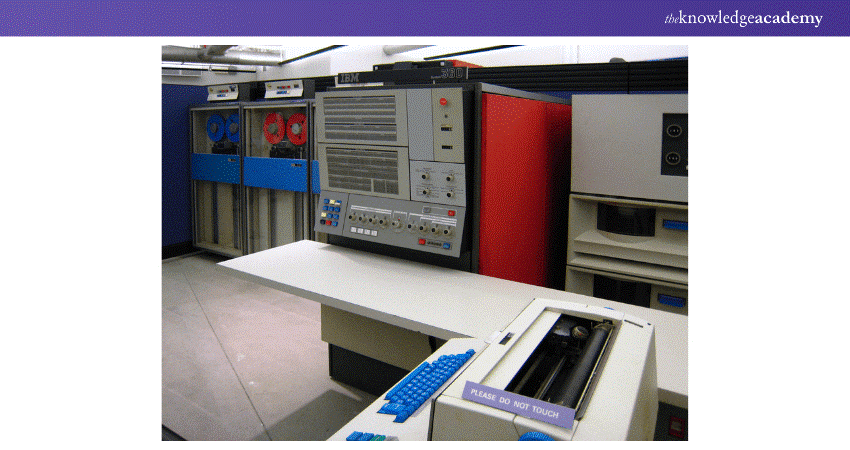
GMOSIS, the first Operating System, was created in the early 1950s. General Motors, a key player in the automotive industry, ventured into the world of technology and created this Operating System for IBM Computer. Since it gathers all related jobs into groups or batches and then submits them to the Operating System using a punch card, the second-generation Operating System was built on a single-stream batch processing system.
The MVS Operating System of IBM is an example of a batch-processing Operating System.
Third Generation (1965-1980)
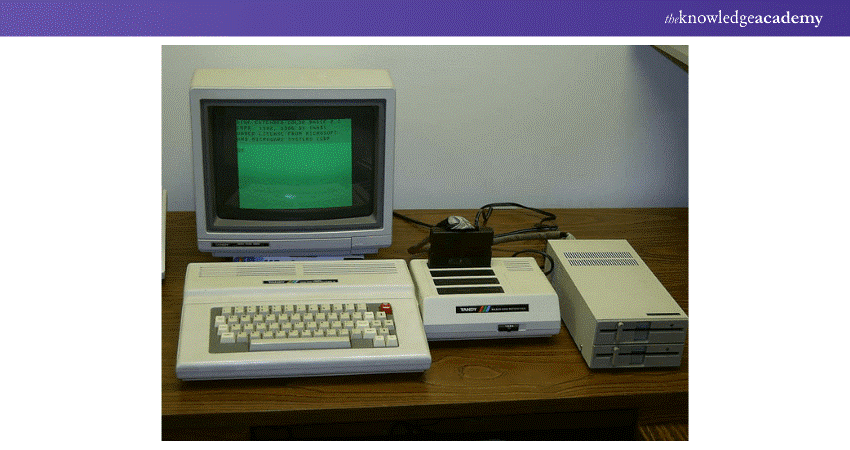
Multi-programmed batched systems mark the third generation in the Evolution of Operating Systems. In this generation, the Operating System was designed to serve numerous users simultaneously.
Interactive users could communicate via an online terminal with a computer, making the Operating System multiprogramming and multi-user.
It executes several jobs that should be kept in the main memory, and the processor determines which program to run through job scheduling algorithms. Windows and IOS are examples of multi-programmed batched Operating Systems.
Fourth Generation (1980-Present)
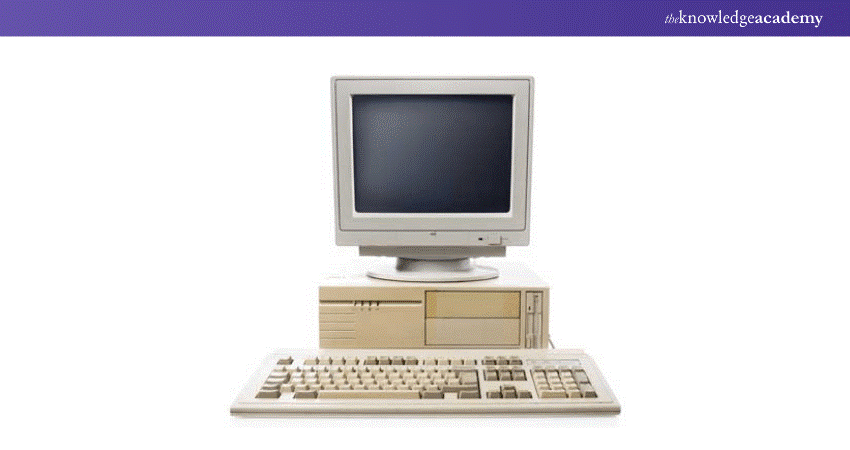
The Fourth-generation Operating System was more commonly associated with Programming Languages often used for database-related tasks.
In the fourth generation, the time-sharing Operating System and the Macintosh Operating System came into existence:
a) Time-sharing Operating System: Time-sharing has significantly impacted the Evolution of Operating Systems. Multiple users can access the system via terminals simultaneously, and the processor's time is divided among them. Printing ports were required for programs with a Command-line User Interface, requiring written responses to prompts or commands. The interaction is scrolled down like a roll of paper. The User Interfaces directly with the computer via printing ports, like an electric teletype.
Few users shared the computer immediately, and each activity was completed in a fraction of a second before moving on to the next. The fast server may act on many users' processes at once by establishing iterations when they are receiving full attention. Multiple programs use time-sharing systems to apply to the computer system by sharing the system interactively. Unix Operating System is an example of a time-sharing OS.
b) Macintosh Operating System: This was based on decades of research into graphical Operating Systems and applications for personal computers. The photo depicts a Sutherland pioneer program sketchpad that was developed in 1960. It employed many of the characteristics of today's Graphical User Interface (GUI), but the hardware components cost millions of dollars and took up a room.
The initiative on massive computers and hardware improvements made the Macintosh commercially and economically viable after many research gaps. Many research laboratories are still working on research prototypes like sketchpads. It served as the foundation for anticipated products. Mac OS X 10.6.8 Snow Leopard is an example of Macintosh OS.
Benefits of Operating Systems
Operating Systems have numerous benefits, including:
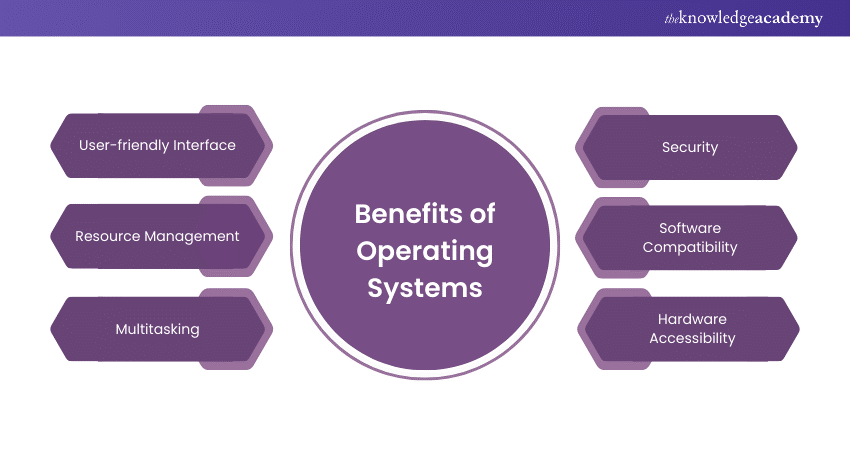
1) Simplifying the communication between applications and hardware components
2) Reducing development time
3) Ensuring a standardised interface for users.
4) Providing a user-friendly interface
5) Allowing resource sharing among users
6) Providing data security and enabling multi-tasking
7) Managing software and hardware communication
8) Allocating memory and controlling data flow
9) Detecting and correcting errors.
Looking for guidance in designing professional user-centric interfaces? Our comprehensive UX Design Course will help you – Sign up now!
Drawbacks of Operating Systems
Operating Systems (OS) are essential for managing computer hardware and software resources but have drawbacks. Here are a few common ones:
1) Some Operating Systems, like macOS and Windows, can be expensive to purchase and maintain.
2) Programming and managing an OS can be complex, requiring specialised knowledge and skills.
3) If the central OS fails, it can impact the entire system, leading to downtime and potential data loss.
4) Operating Systems can be targets for malware and Cyber-attacks, requiring constant updates and security patches.
5) Not all hardware and software are compatible with every OS, which can limit functionality and require additional resources to manage.
6) Some Operating Systems can be resource-intensive, requiring significant memory and processing power.
Conclusion
From basic Command-line Interfaces (CLI) of the early days to today’s sophisticated multi-tasking platforms, the Evolution of Operating Systems reflects the remarkable advancement of technology. Understanding this progression provides exciting insights into how OS development has shaped modern computing and continues to drive efficiency, security, and seamless User Experiences across devices.
Expand your expertise in responsive web design through our Front-End Web Development Course – Sign up now!
Frequently Asked Questions

The first Operating System utilised for real work was GM-NAA I/O. It was developed in 1956 by General Motors’ Research division for the IBM 704 computer.

An Operating System's ability to evolve refers to its capacity to effectively develop, test, and introduce new system functions without interfering with service.

The Knowledge Academy takes global learning to new heights, offering over 30,000 online courses across 490+ locations in 220 countries. This expansive reach ensures accessibility and convenience for learners worldwide.
Alongside our diverse Online Course Catalogue, encompassing 19 major categories, we go the extra mile by providing a plethora of free educational Online Resources like News updates, Blogs, videos, webinars, and interview questions. Tailoring learning experiences further, professionals can maximise value with customisable Course Bundles of TKA.

The Knowledge Academy’s Knowledge Pass, a prepaid voucher, adds another layer of flexibility, allowing course bookings over a 12-month period. Join us on a journey where education knows no bounds.

The Knowledge Academy offers various App & Web Development Courses, including the MEAN Stack Web Development Course and the UX / UI Design Jumpstart Course. These courses cater to different skill levels, providing comprehensive insights into What is a UI Developer.
Our Programming & DevOps Blogs cover a range of topics related to Operating Systems, offering valuable resources, best practices, and industry insights. Whether you are a beginner or looking to advance your Operating System knowledge base, The Knowledge Academy's diverse courses and informative blogs have got you covered.
Upcoming Programming & DevOps Resources Batches & Dates
Date
 MEAN Stack Web Development Training
MEAN Stack Web Development Training
Fri 17th Jan 2025
Fri 21st Feb 2025
Fri 4th Apr 2025
Fri 6th Jun 2025
Fri 25th Jul 2025
Fri 7th Nov 2025
Fri 26th Dec 2025







 Top Rated Course
Top Rated Course



 If you wish to make any changes to your course, please
If you wish to make any changes to your course, please


